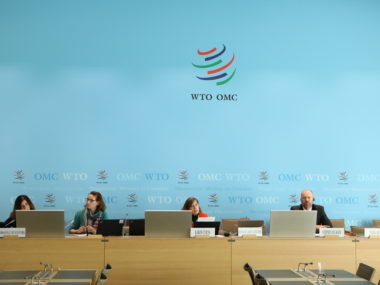Guest post by Ursula Daxecker, Brandon Prins, and Jessica Di Salvatore

The rise (and decline) of Somali piracy. Increasing attacks on oil tankers off of Nigeria’s coast. Maritime piracy is a hot topic these days, and academics have taken notice. In fact, this renewed attention has led to a number of useful findings about piracy’s causes.
For instance, we now know that governments with low state capacity struggle to police coastlines, combat crime, and thus experience more piracy. Poor economic conditions, such as a lack of legal labor market opportunities or a decline in fisheries production, have also been linked to increases in piracy. In addition, favorable geography for pirates, including long coastlines or proximity to shipping routes, contributes to an environment attractive for prospective pirates.
Yet while these findings help us understand why some countries or regions are particularly prone to piracy, fewer studies helped us understand where pirates choose to go to plan and carry out attacks. Although experts have long noted that pirates need sanctuaries on land to operate, few could explain how pirates choose locations for organizing attacks. This question is fairly important, since the answer helps predict where pirates take hold—and hence, helps governments to direct resources to prevent it.
In a forthcoming article in International Interactions, we argue that pirates are rational, criminal actors who generally weigh the potential gains from successful attacks against the risk of capture. Distance from government power centers or difficult coastal terrain should help reduce the risk of capture and thus influence the calculus of pirate organizations. Indonesian “island pirates,” for example, carry out attacks from areas separated from administrative and economic centers by sea or long roads. As shown in the map of piracy incidents in Indonesia in 2013 below, piracy incidents cluster at significant distance from Jakarta.

The location of attacks far away from Indonesia’s capital suggests that pirates avoid places where the government presence is strongest. An implication of this pattern is that the location of pirate organizations and attacks should be a function of state capacity. By state capacity, we mean the ability of the government to “get things done.” In the context of piracy, this means being able to police coastlines and territorial waters, control difficult or distant territory, and provide public services (e.g. education, health care, and others) so people are less inclined to engage in criminal activity. In more capable states, then, pirate attacks should occur further away from centers of government power such as state capitals. In Indonesia, improvements in state capacity over the last 15 years track with our expectations: Average capital-pirate attack distances have increased from around 500 kilometers in 1998 to over 1,000 kilometers in 2013, while Indonesia’s government effectiveness score has improved by more than 50% in the same time frame.
Yet in very weak and fragile states, pirates take advantage of the inability of the government to project power. This means that pirate attacks may occur even in close proximity to government power centers. Clusters of pirate attacks close to Mogadishu, Berbera, and Bossaso, significant political and commercial cities in Somalia and Somaliland, illustrate this dynamic in weak states.
Our findings have some validity beyond Indonesia and Somalia. Using geocoded data on piracy from the International Maritime Bureau, quantitative analyses support our expectations that improvements in state capacity result in noticeable increases in median piracy distance.
Ok, so pirates are informed strategic actors. What do these findings mean for policy? Clearly, policymakers in piracy-prone states should pay attention to the geography of governance reforms. Reforms that improve local governance in distant or otherwise remote locations should be most promising in helping to avoid the displacement of piracy. That said, improvements in governance are not a panacea for countering piracy, since such improvements may displace rather than eliminate piracy. From a scholarly perspective, and more broadly, our findings call for renewed attention to the causes and consequences of sub-national variation in state capacity.
Ursula Daxecker is an Assistant Professor of Political Science at the University of Amsterdam, Brandon Prins is Professor of Political Science at the University of Tennessee, and Jessica Di Salvatore is a PhD candidate in Political Science at the University of Amsterdam.







6 comments
Another good topic!
That map shows that Indonesian pirate attacks also center on the Singapore Straits, one of the most highly trafficked, narrow and well-monitored sea lanes. And Singapore is one of the most controlling and capable states in the world. It doesn’t seem like this model is capturing much of the story here. Or can’t the Singaporean authorities arrest Indonesian pirates?
Very good point. Of course state capacity is not the only or even the most important factor affecting the location of attacks. We did control for proximity to chokepoints in some robustness tests for the paper but this did not cancel out the effect of governance. Also, we compared this map to one for 1997, when governance indicators were substantially lower, and it shows much more clustering of events in and around Jakarta.
Thanks for your response, Ursula. Of course your mechanism suggests that the pirates are moving away from the capital in order to evade capture by a stronger regime. This isn’t the case if they’re simultaneously moving toward Singapore — a stronger regime. But the Indonesian government also enforces order just fine in Balikpapan City, where the pirates have apparently moved within Indonesia’s territory according to your map. Just a thought.